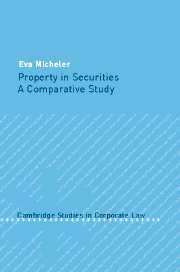Book contents
- Frontmatter
- Contents
- Preface
- Table of legislation
- Table of cases
- Introduction
- 1 Convergence and path-dependence
- Part I English law
- Part II German and Austrian law
- Part III Conclusions
- 15 Legal development as a path-dependent process
- 16 Legal doctrine and market infrastructure
- 17 Implications for convergence
- Select bibliography
- Index
16 - Legal doctrine and market infrastructure
from Part III - Conclusions
Published online by Cambridge University Press: 28 July 2009
- Frontmatter
- Contents
- Preface
- Table of legislation
- Table of cases
- Introduction
- 1 Convergence and path-dependence
- Part I English law
- Part II German and Austrian law
- Part III Conclusions
- 15 Legal development as a path-dependent process
- 16 Legal doctrine and market infrastructure
- 17 Implications for convergence
- Select bibliography
- Index
Summary
The first conclusion derived from the analysis contained in this book is that legal doctrine determines the form of future legal development. Having determined the influence of incumbent legal doctrine on future legal doctrine, a second observation can be made.
It has already been noted in section 1.2.1 that a view exists that incumbent institutions have an influence on the development of future institutions. Mark Roe makes the point that the shareholder structure prevailing in one jurisdiction exercises an influence to prevent change which would be efficient from an overall market perspective, but which would cause incumbent power-holders to lose influence. Roe refers to this phenomenon as ‘structure-driven path-dependence’. In addition to structure-driven path-dependence, rule-driven path-dependence also exists. Rule-driven path-dependence occurs because law determines the framework within which institutions act. Law is, however, subject to politics and also to institutional pressures. Institutions will use their influence to cause the law to suit their own political objectives. In Mark Roe's analysis, institutions come first; they are themselves a function of politics or even historical accidents. Law is a secondary indirect factor which facilitates political influence and can be modified to any desired degree.
The analysis contained in this book sheds further light on the relationship between law and institutions. It confirms the theory that the institutions prevailing in a jurisdiction influence future development. In England, for example, the process of eliminating paper from securities transfers was beset with difficulties because of institutional lobbying.
- Type
- Chapter
- Information
- Property in SecuritiesA Comparative Study, pp. 231 - 232Publisher: Cambridge University PressPrint publication year: 2007



